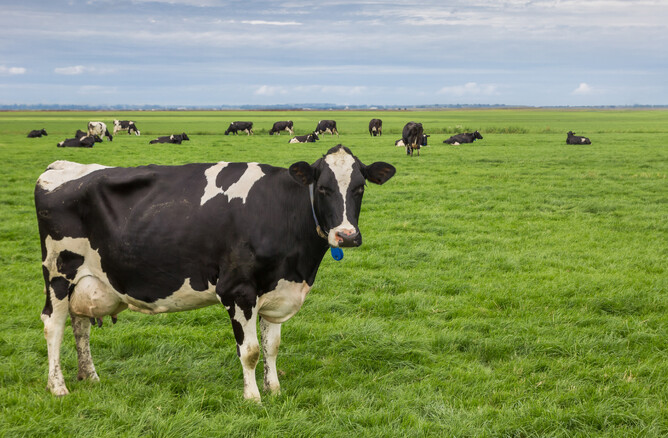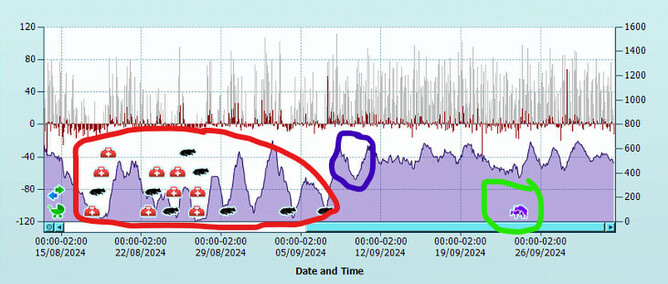Wearable rumination technology gives users a great insight into what is happening inside their cows, both at an individual and a herd level.
Spring is the period of biggest change for cows, so we see more health alerts corresponding with changes in rumination and activity. These alerts can be due to many different disease processes, such as metabolic disease (milk fever, ketosis etc.), mastitis, metritis – the list goes on.
One example of a more serious disease process was recently seen by vets Dan and Penny.
The cow had a history of recurrent health alerts corresponding with drops in rumination post-calving and had been treated with many courses of different antibiotics, which had not helped.
During the clinical exam, she had a ‘ping’ on the left side of her abdomen, which is a classic sign for a left displacement of the abomasum (LDA). The LDA was surgically corrected and the cow responded well.
Looking at her rumination graph (pictured below), you can see circled in red the period of recurrent rumination drops and unsuccessful antibiotic treatments. She had surgery on the day highlighted in blue. Since then her rumination has stabilised and she even had her first heat recently, indicated in green.
LDAs are fairly common in some parts of the world, for example in the UK and the USA where their dairy cows are much higher producing. However, in New Zealand they are less common, but we do see the odd one every spring.
This case highlights the value of getting a vet to check over sick cows, especially if they have not responded to multiple rounds of treatment. An LDA will not be ‘cured’ with antibiotics and it is costly to keep trying different drugs in the hope that one might work!
We can provide flowcharts for farmers using wearable tech to help them decide what actions to take with the cows on their health alert list. Ask your KeyVet if you would like one.


